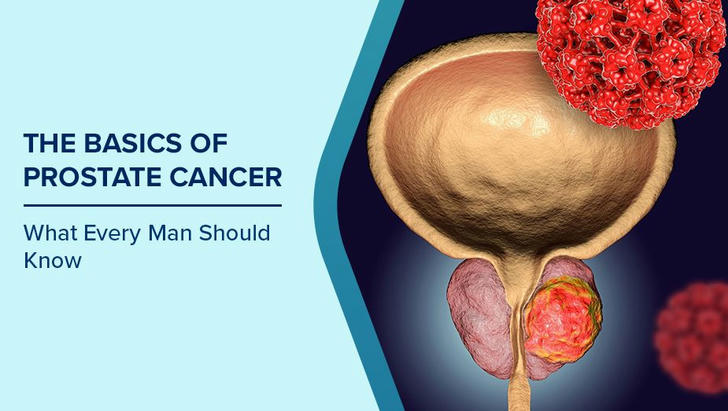How Long Can You Live with Prostate Cancer? Real Survival Rates by Stage (2025 Guide)
How long can you live with prostate cancer?
That question matters deeply to millions of men and their families. The good news: prostate cancer is one of the most treatable cancers — and many men live long, healthy lives even after diagnosis.

Understanding Prostate Cancer Stages and Survival
Prostate cancer is classified into four main stages (I–IV), determined by PSA levels, Gleason score, and how far the cancer has spread. Each stage affects both treatment and life expectancy.
| Stage | Description | Typical 5-Year Survival Rate (U.S.) | Outlook |
|---|---|---|---|
| Stage 1 | Small tumor, confined to the prostate | Nearly 100% | Excellent — often curable |
| Stage 2 | Larger or more aggressive tumor, still confined | Nearly 100% | Excellent with treatment |
| Stage 3 | Spread just beyond prostate capsule | ≈95% | Manageable with combined therapy |
| Stage 4 | Metastatic (spread to lymph nodes or distant organs) | ≈30% | Chronic but treatable condition |
Source: American Cancer Society (SEER 2024)
📊 Quick Look: Prostate Cancer Survival Snapshot (2025)
Localized (Stages 1–2): Nearly 100% survive 5+ years
Regional (Stage 3): About 95% survive 5 years
Metastatic (Stage 4): Around 30% survive 5 years — but rising yearly with new treatments
Stage 1: Early Detection Means Lifelong Survival
Stage 1 prostate cancer is slow-growing and found only in the prostate. Many men never experience symptoms.
Treatment options:
Active surveillance (“watchful waiting”)
Surgery (radical prostatectomy)
Radiation therapy
Life expectancy:
Almost all men with Stage 1 prostate cancer live more than 15 years, often dying from causes unrelated to cancer.
👉 Early PSA screening can catch this stage before it spreads — when it’s nearly always curable.
Stage 2: Still Highly Curable
Stage 2 prostate cancer may be more aggressive but remains confined to the prostate.
Treatment options:
Surgery or radiation
Hormone therapy (for higher-risk tumors)
5-year survival rate: nearly 100%
Outlook:
With early, consistent treatment, most men remain cancer-free for decades.
👉 Regular follow-ups help prevent recurrence and maintain full quality of life.
Stage 3: Locally Advanced but Controllable
Stage 3 prostate cancer means the tumor has extended beyond the prostate capsule but hasn’t spread to distant organs.
Treatment approaches:
External beam radiation + hormone therapy
Combination surgery and radiation for select cases
New immunotherapy and targeted drug trials
Life expectancy:
About 95% survive 5 years, and many live 10–15 years with ongoing management.
Encouraging progress:
Modern hormone-blocking drugs — such as abiraterone (Zytiga) or enzalutamide (Xtandi) — are extending survival dramatically.
👉 Routine PSA monitoring helps track progress and adjust treatment early.
Stage 4: Metastatic Prostate Cancer Life Expectancy
Stage 4 is when the cancer spreads to bones, lymph nodes, or other organs.
Although it’s not curable, it’s increasingly manageable as a chronic disease.
Treatment options:
Hormone therapy (ADT)
Chemotherapy (docetaxel, cabazitaxel)
Targeted therapy (PARP inhibitors for BRCA mutations)
Radiopharmaceuticals (for bone metastases)
Average survival:
Median: 3–7 years
Many live 10+ years with modern treatment and good health management
Recent breakthroughs:
New drugs like olaparib and lutetium-177 PSMA therapy are improving both survival and quality of life.
👉 Metastatic prostate cancer today is often treated like a long-term condition, not a death sentence.
Real Story: Living 12 Years After Stage 4 Diagnosis
When Tom, age 64, was diagnosed with Stage 4 prostate cancer, his doctors were cautious. But through hormone therapy and modern targeted drugs, Tom has lived cancer-stable for over 12 years.
“I play golf twice a week, travel with my wife, and enjoy every moment. It’s not just about surviving — it’s about living.”
Key Factors That Affect Prostate Cancer Life Expectancy
| Factor | Impact | Explanation |
|---|---|---|
| PSA Level | Indicates tumor activity | Lower PSA = slower cancer growth |
| Gleason Score | Measures cell aggressiveness | Higher = more likely to spread |
| Age & Overall Health | Affects treatment options | Healthier men recover faster |
| Genetic Factors | Determines drug response | BRCA-positive respond to PARP inhibitors |
Frequently Asked Questions
Q: Can prostate cancer be cured completely?
A: Yes — when detected early (Stage 1–2), prostate cancer is often cured with surgery or radiation.
Q: What is the average life expectancy with Stage 4 prostate cancer?
A: Median survival is 3–7 years, but many men live 10 years or longer thanks to advanced therapies.
Q: What is the best way to detect prostate cancer early?
A: Regular PSA blood tests and digital rectal exams can detect prostate cancer before symptoms appear.
Q: Does lifestyle really make a difference?
A: Absolutely — maintaining a healthy weight, eating well, and exercising regularly all support better outcomes.
2025 Survival Rates Summary
| Stage | 5-Year Survival Rate | 10-Year Survival Rate (Est.) | Prognosis (2025) |
|---|---|---|---|
| Stage 1 | 99–100% | 95–98% | Often cured |
| Stage 2 | 98–100% | 90–95% | Excellent with treatment |
| Stage 3 | 95% | 80–85% | Good with long-term management |
| Stage 4 | 30% | 20% | Chronic, manageable disease |
Conclusion: Long Life, Real Hope
Most prostate cancers are highly treatable, and survival rates remain among the best of all cancers. Early detection, regular checkups, and open communication with healthcare providers make the biggest difference.
“Prostate cancer is not just about years lived — it’s about living well.”
